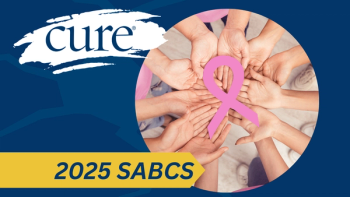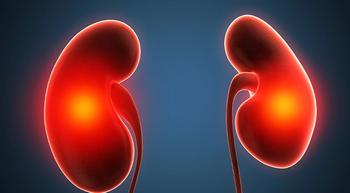
Kidney Cancer: What Is New in the Second-Line Treatment Setting?
Dr. Camillo Porta discussed what is new in kidney cancer beyond the first line of treatment at A Vision of Hope: A Kidney Cancer Educational Symposium.
Patients with kidney cancer who have failed frontline therapy still have many options available to them for subsequent treatment, according to Dr. Camillo Porta, from the department of internal medicine and therapeutics at the University of Pavia and the division of translational oncology at the IRCCS Instituti Clinici Scientifici Maugeri in Italy.
At
Second-line treatment, he explained, occurs when the first line of therapy has failed in doing its job to control tumor progression. “This is always a tough moment for patients with cancer, like the entire world is on the edge of falling on his/her head,” Porta added. “For the vast majority of you, fortunately, this is not true. This is an unpleasant, but obliged step in your personal war against cancer.”
He noted that it has been clear that a benefit in overall survival has been seen among those treated with a sequence of active treatment, not just by a single agent. “The number of patients receiving more than two lines of therapy is increasing and this often leads to long survival times,” Porta explained.
Some treatments that have been evaluated for the second-line treatment of kidney cancer include Sutent (sunitinib), Votrient (pazopanib), Nexavar (sorafenib), Avastin (bevacizumab plus interferon, Inlyta (axitinib), Afinitor (everolimus), Lenvima (lenvatinib) plus Afinitor and Bevencio (avelumab) plus Inlyta. However, these therapeutic options have only shown a benefit in improving progression-free survival (the time from treatment to disease progression or worsening). In a subgroup of patients, Torisel (temsirolimus) monotherapy, Yervoy (ipilimumab) plus Opdivo (nivolumab) and Keytruda (pembrolizumab) plus Inlyta have prolonged overall survival in the first-line setting, while Opdivo and Cabometyx (cabozantinib) have also done so in the second-line setting.
With so many options, Porta noted that not all physicians are equal, but patients are. “(Patients) simply want to live longer and better. Whatever better means to each of them,” he said, adding that this is why physicians are focused on capturing quality of life in patient-reported outcomes.
“The trade-off between benefits, like survival gain, and harms, like treatment-related toxicities, in the second-line setting is a trade-off a patient is willing to accept and is often different compared with things that are usually accepted by a newly diagnosed patient,” Porta explained. “Safety and quality of life are usually more important in later treatment lines, though. Of course, this is not a universal rule.”
Therefore, the treatment experience in the second-line setting, like receiving a more gentle agent, is key in selecting which therapeutic option to use.
Luckily, renal cell carcinoma is an angiogenesis-driven tumor throughout the entirety of disease. “Meaning that after the failure of an antiangiogenic agent, another can be active and continue to control disease progression,” Porta said. “This is a true paradigm shift from the era of cytotoxic chemotherapy.”




